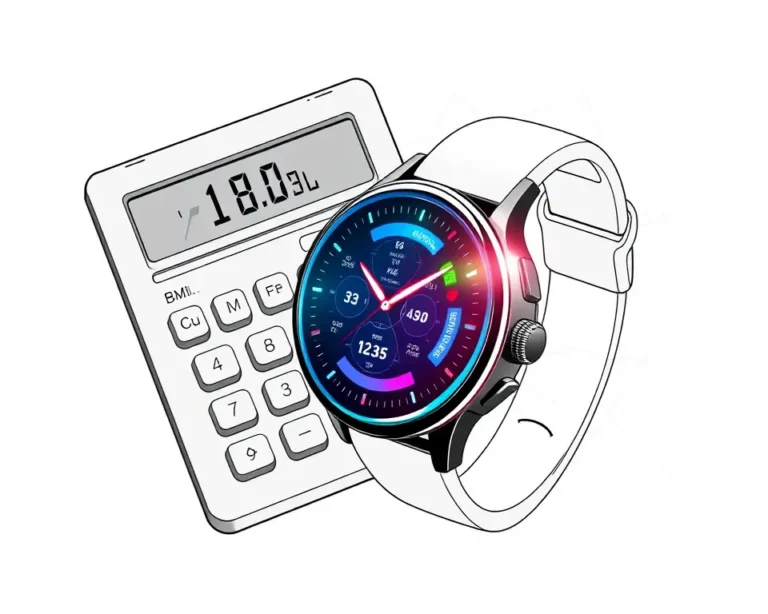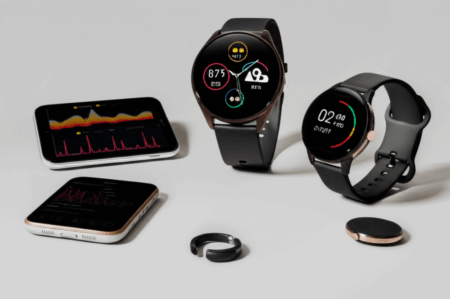In an era where wearable technology can track everything from our steps to our sleep cycles, the humble BMI (Body Mass Index) calculator might seem like a relic of the past. But is it truly ready for the scrap heap, or does this simple tool still have a place in the modern health and fitness landscape?
The Rise of the Wearable Wizards
Smartwatches and fitness trackers have transformed us into walking data hubs. Companies like Fitbit, Apple, and Garmin churn out gadgets that monitor everything from oxygen levels to workout intensity. These devices offer personalized, real-time feedback, showing us how a jog spikes our heart rate or how a poor night’s sleep impacts our recovery. Why settle for a basic height-and-weight formula when your watch can spit out a detailed health report? This constant stream of data is engaging and, for many, habit-forming. It stands in stark contrast to the static nature of a BMI calculation.
BMI’s Stubborn Staying Power
Despite the allure of advanced technology, BMI isn’t ready to disappear just yet. Doctors still use it as a quick and easy way to assess a patient’s weight status. It’s a simple calculation: plug in your height and weight, and you’re classified as “underweight,” “normal weight,” or “overweight.” No charging is required.
For all its flaws, BMI is a universal standard used in clinics and studies worldwide to identify obesity trends and potential health risks. While wearables dazzle with features, they aren’t always perfect. A heart rate spike could indicate a great workout or simply stress from a work email. BMI, for better or worse, cuts through the noise. It’s not trying to interpret your mood; it’s just math. That simplicity still matters, especially for those without a $300 gadget on their wrist.
Understanding BMI: The Basics
Body Mass Index (BMI) is a medical screening tool that estimates body fat based on height and weight. Healthcare providers calculate BMI using a formula: weight in kilograms (kg) divided by the square of height in meters (m²). The resulting number correlates with body fat levels; a higher number generally indicates more body fat. BMI is a tool to assess risk factors for certain health conditions but isn’t always an accurate representation of body fatness.
Here’s a breakdown of BMI categories:
- Underweight: Less than 18.5
- Normal weight: 18.5 to 24.9
- Overweight: 25 to 29.9
- Obese: 30 or greater
It is important to remember that BMI is not a diagnostic tool. A healthcare provider uses BMI along with other tools and tests to assess an individual’s health status and risks. High body fat can lead to serious conditions like heart disease, stroke, and type 2 diabetes.
The Limitations of BMI
While BMI is a widely used tool, it has significant limitations:
- Doesn’t differentiate between lean body mass and fat mass: A muscular person may have a high BMI but low body fat, while someone with low muscle mass and high body fat might have a “healthy” BMI.
- Doesn’t account for body fat distribution: Excess fat in the abdominal area poses a greater health risk than fat in other areas like the thighs.
- Uses the same chart for males and females: Adult females typically have more body fat than adult males, which BMI fails to consider.
- May overestimate body fat in athletes: Athletes with high muscle mass may be incorrectly classified as overweight.
- May underestimate body fat in older adults: Older adults tend to lose muscle mass, which can lead to an underestimation of body fat.
- Developed based on non-Hispanic white men: Accuracy may vary for different sexes, ethnicities, and races.
- Doesn’t assess co-existing conditions: BMI does not consider existing health conditions, disease risks, or functionality.
Where Wearable Tech Excels
Wearable devices offer a wealth of data that BMI simply can’t provide:
- Activity levels: Track steps, active minutes, and workout intensity.
- Sleep patterns: Monitor sleep duration, sleep stages, and sleep quality.
- Heart rate: Measure resting heart rate, heart rate variability, and heart rate during exercise.
- Body composition: Some devices estimate body fat percentage, muscle mass, and water weight.
- Other metrics: Some wearables track skin temperature, stress levels, and even blood oxygen saturation.
This detailed information allows for a more personalized and comprehensive assessment of health and fitness. Wearables provide insights into daily habits and trends, enabling users to make informed decisions about their lifestyle.
The Gaps Wearables Can’t Fill
Despite their advanced capabilities, wearables also have limitations:
- Accuracy concerns: The accuracy of wearable data can vary depending on the device, sensor quality, and how it’s worn.
- Cost and accessibility: Not everyone can afford or wants to use wearable technology.
- Data overload: The sheer volume of data can be overwhelming and difficult to interpret without guidance.
- Dependence on technology: Wearables rely on batteries and software, which can be prone to glitches and require updates.
- Lack of context: Wearable data alone doesn’t provide the full picture of a person’s health.
BMI, in contrast, is a long-term marker, tracking trends over months or years. It’s a steady baseline when wearables get too complex. Additionally, BMI calculators are a free, no-frills option for those who aren’t on the wearable train.
A Synergistic Approach: Combining BMI and Wearable Data
The future likely lies in combining BMI with the data provided by wearable technology. Imagine a scenario where your BMI serves as a starting point, and your wearable data provides context. A “healthy” BMI might reveal a sluggish metabolism, while a higher BMI could be paired with excellent fitness stats. Apps could merge the old and new, making BMI a launchpad for deeper insights, not a standalone judgment.
Some brands are already exploring this integration. Envision a dashboard where BMI sits alongside calorie burn and resting heart rate, painting a fuller picture of your health. It’s not about choosing one over the other but blending the quick-and-dirty with the high-tech. This combination could keep BMI relevant, even as wearables dominate the health-tracking landscape.
The Role of AI
Artificial Intelligence (AI) can play a crucial role in bridging the gap between BMI and wearable data. AI algorithms can analyze vast amounts of data from wearables to identify patterns and predict health risks. By incorporating BMI as one data point, AI can provide more accurate and personalized insights. For example, AI could use wearable data to assess the impact of lifestyle changes on BMI and provide tailored recommendations for weight management.
Wearables in Obesity Clinics
Studies have examined whether adding wearable technology to interventions improves weight loss. However, some results have been unexpected, with patients using wearable technology losing less weight than those without it. This could be due to the unreliability of sensors or issues with accurately tracking dietary intake.
While wearable technology empowers patients, it may be more effective when combined with clinical supervision. Clinicians can use wearable data to monitor a patient’s behavior between appointments, increasing accountability and motivation.
The Future of Health Monitoring
Smartwatches and other wearable technologies have the potential to change how life insurance policies are priced by offering better data about individuals’ mortality risk. Data from wearable devices, such as daily step counts, activity levels, heart rates, and sleep duration, can provide valuable insights into an individual’s overall health and lifestyle. Insurers can use this data to improve underwriting accuracy and offer customized rates based on individual risk profiles.
Conclusion: A Seat at the Table
So, do BMI calculators still matter? Yes, but they’re no longer the star. Wearable tech has the edge—flashy, real-time, and in your face. Yet BMI hangs on as a trusty sidekick, especially for the basics or when tech is out of reach. The wearable era is here, but BMI still has a seat at the table—just not the head. In 2025, it’s less about choosing one over the other and more about how they team up to provide a more complete picture of our health.







